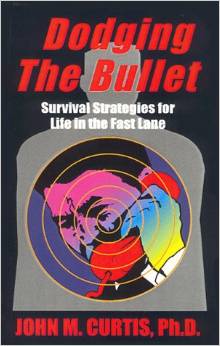Hit with another slap in the face, Lord & Taylor joined a bevy of iconic retail clothing chains filing for Chapter 11 bankruptcy, spelling doom for the Covid-19 rally that has the Dow Jones Industrial Average only 3,000 point off its all-time record high Feb. 12 of 29,551.42. While the Nadaq Composite hit another record high today of 10,902.80, rallying of big-name tech shares like Amazon, Apple, Google, Microsoft and Facebook. But while Wall Street rearranges the deck chairs on the Titanic, the handwriting’s on the wall that a sizable sell-off is building momentum. With Tailored Brands, including Jos. A. Banks, Men’s Warehouse, K&G Fashion Superstores and More Clothing for Men all going under, it spells doom for the economy. Covid-19 was the tipping point in pushing an economy reeling on recession, not the rosy scenario painted by 74-year-old President Donald Trump.
While it’s true that before the coronavirus AKA SARS CoV-2 or Covid-19 global pandemic upended the U.S. and global economy, the world economy was teetering on recession, it’s also true that Trump did everything possible to prime the pump together with the U.S. Federal Reserve Board. Wall Street unraveled almost to the day the World Health Organization declared March 11 a global pandemic. WHO’s 55-year-old Director-General Tedros Adhamon said Jan. 14 said there was no “human-to-human transmission”in Wuhan, China. Tedros knew it was false but continued to save Chinese President Xi Jinping’s backside, knowing declaring a global pandemic would drive business away from China. Against WHO, U.S. Centers for Disease Control and Prevention [CDC], and National Institutes of Health [NIH] chief infectious disease expert Dr. Anthony Fauci advice, Trump banned Chinese flights Jan. 31.
When 78-year-old investor Sam Zell, former owner of Major League Baseball’s Chicago Cubs, the Chicago Tribune and CEO of Equity International predicted the U.S. would lapse into recession in 2017, it helped get 74-year-old President Donald Trump elected. Unlike his 72-year-old Democrat rival former Secretary of State Hillary Rodham Clinton, Trump promised to slash government regulation, but, more importantly, taxes, signing the biggest tax cut in modern U.S. history Dec. 22, 2017, dropping corporate tax rates from 35% to 21%. Some economists credit Trump’s fiscal stimulus for staving off the expected recession in 2018 and 2019. When Covid-19 struck the U.S. economy starting March 11, it was too much for the economy to bear. Democrats and the media have seized on the continued Covid-19 crisis and its effect on the U.S. economy to blame Trump for the record high unemployment.
Hearing name-brand clothing chains go under sends shock waves to the public, hearing about high profile bankruptcies. When the 200-year-old Brooks Brothers went under last month, it was the end of an era, an iconic U.S. clothing store that outfitted President Abraham Lincoln and many other presidents in modern times. With the national unemployment rate at 11.1%, many states exceeding 15%, there’s just far fewer customers for men’s high-fashion industry. Barney’s of New York, one of the most iconic high-fashion U.S. brands closed its doors for good last year, signaling that things weren’t OK before the coronavirus hit. When you consider the economy had been expanding for 10-years since the 2008 Financial Crisis and Great Recession, it’s the longest economic recovery in U.S. history, ripe for a downturn. No one expected as many bankruptcies among retail clothing giants, leaving investors gun shy going forward in the age of Covid-19.
Adding to the unemployment rates, losing retail or outlet clothing stores continues to cost the economy thousands of jobs. When you look a J. Crew, J.C. Penny, Neiman Marcus, Stage Stores, Asena Retail Group, that owns Lane Bryant and Ann Taylor, shutting their doors is a big blow the rising unemployment numbers. U.S. Gross Domestic Product [GDP] continues to drop about 10% per quarter, unless there’s a change coming soon. More bankruptcies in the retail closing industry doesn’t bode well for the economy, not only shedding jobs but continuing to erode consumer confidence. Watching developments overseas, currency traders hammer the U.S. dollar, knowing that the Fed continues to print fiat money. House Democrats seek in their May 15, $3.5 trillion HEROES Act, pushing the U.S. national debt to over $30 trillion, something that could stymie any U.S. economic recovery.
High-profile bankruptcies of former retail clothing giants cause shockwaves on Wall Street, letting major funds know that the underlying economy continues to disintegrate. Unless there’s some major movement on a new stimulus bill, Wall Street won’t be able to hold up much longer without a major sell off. Trump finds himself caught between a rock-and-a-hard place, pushing the national debt to the once unthinkable $30 trillion or battling with House Speaker Nancy Pelosi (D-Calif.) who appears to be winning the propaganda war with the White House. Trump faces growing pressure to get out a new stimulus bill to save the unemployed from losing enhanced unemployment benefits. Trump objects to the HEROE’s Act throwing $1 trillion to cities, counties and states around the country, when Trump contends that cities, counties and states are in financial trouble from Democrat rule.
About the Author
John M. Curtis writes politically neutral commentary analyzing spin in national and global news. He’s editor of OnlineColumnist.com and author of Dodging The Bullet and Operation Charisma.



